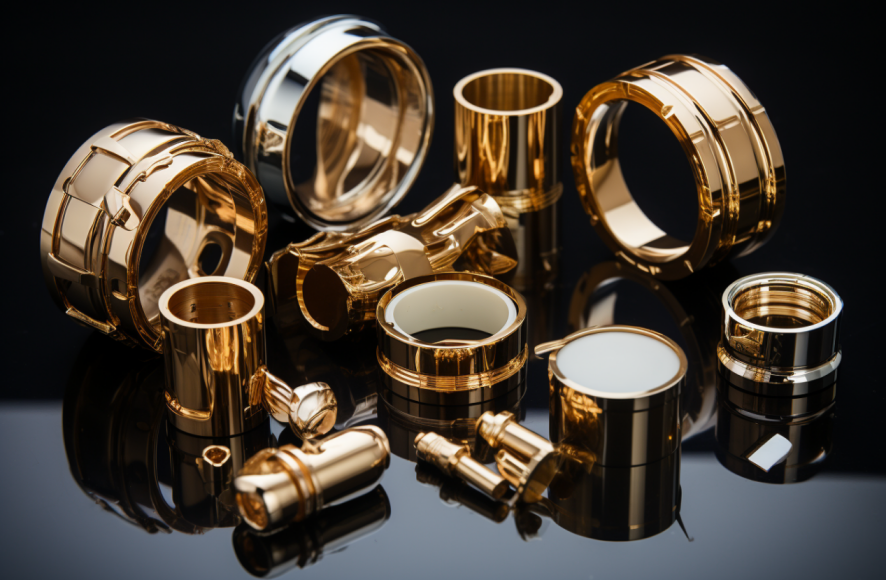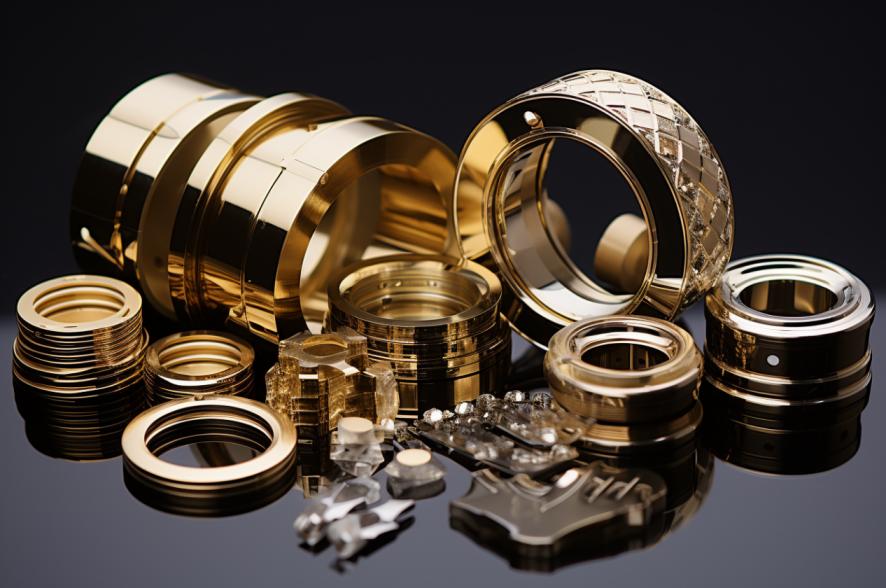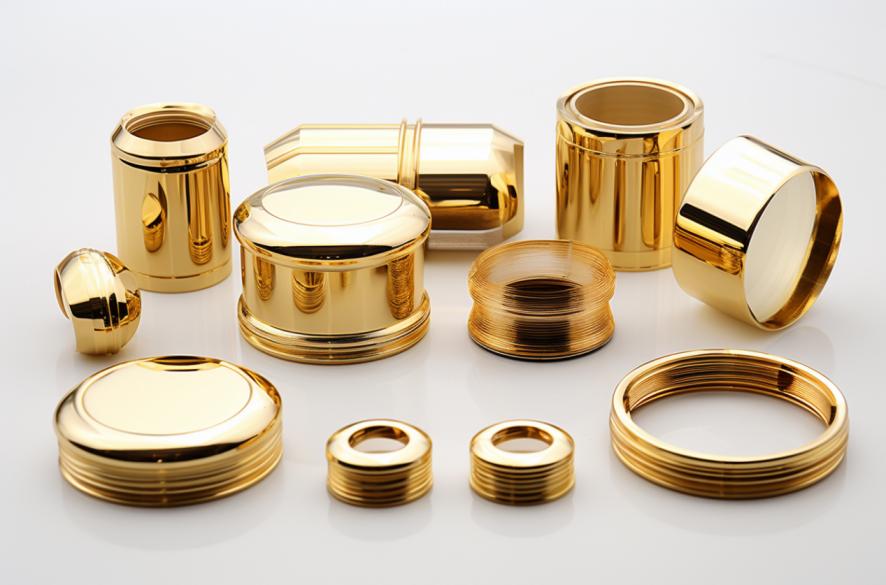
News
12 Year Pvd Coating Machine In Foxin
How Do Advancements In High Quality Metal Gold Plating Machine Vacuum Coating Technology Impact Various Industries?
Uncover the capabilities of top-tier High Quality Metal Gold Plating Machine Vacuum Coating. Delve into the core components, key considerations, and practical applications exemplifying how these advanced methods elevate durability, aesthetics, and performance in various sectors.
Introduction to Gold Plating and Vacuum Coating
1.1 What are Gold Plating and Vacuum Coating?
Gold plating and vacuum coating are sophisticated techniques used in various industries to enhance the surface properties of materials, particularly metals. Gold plating involves the deposition of a thin layer of gold onto a substrate, while vacuum coating is a broader term encompassing the deposition of various materials in a vacuum environment onto a surface.
1.2 Importance in Various Industries
These processes play a vital role across a spectrum of industries, including electronics, automotive, jewelry, aerospace, and more. In electronics, gold plating is utilized to improve conductivity and protect components from corrosion. Vacuum coating, on the other hand, finds applications in creating reflective surfaces for mirrors, enhancing the durability of tools and equipment, and providing decorative finishes.
1.3 Process and Applications
Gold plating typically involves the immersion of a substrate into a solution containing gold ions, followed by the application of an electric current to facilitate the deposition of gold atoms onto the surface. High Quality Metal Gold Plating Machine Vacuum Coating, however, utilizes advanced technology to evaporate or sputter materials in a vacuum chamber onto the substrate. Applications range from decorative coatings on jewelry to functional coatings on precision optics.
Understanding Vacuum Coating Technology
2.1 How Vacuum Coating Works
Vacuum coating operates on the principle of physical vapor deposition (PVD) or chemical vapor deposition (CVD). In PVD, material is vaporized from a solid source and deposited onto a substrate, while in CVD, precursor gases react to form a solid coating on the substrate. The vacuum environment ensures uniform deposition and minimizes impurities, resulting in high-quality coatings.
2.2 Methods and Techniques
Several methods and techniques are employed in vacuum coating, including evaporation, sputtering, and ion plating. Evaporation involves heating a material until it vaporizes while sputtering uses ions to dislodge atoms from a target material. Ion plating enhances adhesion by bombarding the substrate with ions during deposition. Each technique offers unique advantages and is selected based on the desired properties of the coating.
2.3 Applications of Vacuum Coating
Vacuum coating finds diverse applications across industries. In the automotive sector, it is used to create reflective coatings for headlights and decorative finishes for trim components. In aerospace, vacuum-coated surfaces provide thermal insulation and protection against harsh environmental conditions. Additionally, vacuum-coated optics are crucial for enhancing the performance of lasers and telescopes.
Benefits of Gold Plating and Vacuum Coating
3.1 Advantages of Gold Plating and Vacuum Coating
Both gold plating and vacuum coating offer numerous benefits, making them indispensable in various applications. Gold plating provides exceptional corrosion resistance, electrical conductivity, and aesthetic appeal, making it ideal for high-end jewelry and electronic connectors. Vacuum coating enhances the durability and functionality of surfaces while offering customizable properties such as color, hardness, and reflectivity.
3.2 Durability and Corrosion Resistance
One of the primary advantages of gold plating and vacuum coating is their ability to impart durability and corrosion resistance to surfaces. Gold plating forms a protective barrier that shields the substrate from environmental factors, ensuring longevity and reliability. Vacuum-coated surfaces exhibit enhanced resistance to wear, abrasion, and chemical corrosion, making them suitable for demanding applications in harsh environments.
3.3 Aesthetic Appeal and Customization
In addition to their functional benefits, gold plating and vacuum coating also enhance the aesthetic appeal of products. Gold plating adds a luxurious finish to jewelry and decorative items, elevating their perceived value and attractiveness. Vacuum coatings offer endless possibilities for customization, allowing manufacturers to achieve unique textures, colors, and surface properties to meet specific design requirements.
3.4 Real-World Examples
The significance of gold plating and vacuum coating is evident in numerous real-world examples. In the electronics industry, gold-plated contacts ensure reliable connectivity and signal transmission in devices ranging from smartphones to medical equipment. Vacuum-coated automotive components not only enhance aesthetics but also improve durability and weather resistance, prolonging the lifespan of vehicles.
Key Components of a High-Quality Gold Plating Machine
4.1 Understanding Essential Parts
A High Quality Metal Gold Plating Machine Vacuum Coating comprises several key components, each playing a crucial role in the vacuum coating process. These include a vacuum chamber, power source, target material, substrate holder, and control system.

4.2 Role of Each Component
The vacuum chamber creates a controlled environment with low pressure, allowing for uniform deposition of the target material onto the substrate. The power source generates energy to vaporize or sputter the target material, while the substrate holder securely positions the substrate for coating. The control system regulates parameters such as temperature, pressure, and deposition rate to ensure precise coating thickness and quality.
4.3 Importance of Quality Materials and Craftsmanship
Quality materials and craftsmanship are paramount in the construction of a gold plating machine. The vacuum chamber must be constructed from high-grade materials to withstand the rigors of vacuum conditions and prevent contamination of the coating. Likewise, precision machining and assembly techniques are essential to ensure the reliability and performance of the machine over time.
Factors to Consider When Choosing a Gold Plating Machine
5.1 Decision-Making Process
Choosing the right gold plating machine requires careful consideration of various factors to meet specific application requirements. Size, capacity, power consumption, and cost are key considerations that impact the suitability and efficiency of the machine for a given task.
5.2 Size and Capacity
The size of the machine should align with the dimensions of the substrates being coated, ensuring adequate space for uniform deposition. Capacity refers to the volume of substrates that can be processed simultaneously, affecting production throughput and efficiency. Selecting a machine with the appropriate size and capacity minimizes downtime and maximizes productivity.
5.3 Power Consumption and Cost
Power consumption directly impacts operational costs and environmental sustainability, making energy-efficient machines desirable. However, balancing power consumption with performance and cost is essential to achieve the desired coating quality without compromising efficiency or affordability. Conducting a cost-benefit analysis helps evaluate different options and determine the most cost-effective solution.
5.4 Tips for Evaluation
When evaluating gold plating machines, it’s essential to assess performance specifications, reliability, and customer support services. Requesting demonstrations or trials allows firsthand experience of the machine’s capabilities while consulting with experts or existing users provides valuable insights into its performance and suitability for specific applications.

Case Studies: Successful Applications of Gold Plating and Vacuum Coating
6.1 Real-Life Examples
High Quality Metal Gold Plating Machine Vacuum Coating have been instrumental in enhancing the performance and aesthetics of products across various industries. In the electronics industry, gold-plated connectors ensure reliable signal transmission in smartphones, computers, and medical devices, reducing the risk of connectivity issues and device failures.
6.2 Impactful Applications
In the automotive sector, vacuum-coated components such as reflectors and trim accents not only enhance visual appeal but also improve durability and weather resistance. Additionally, vacuum-coated optical lenses and mirrors play a critical role in laser systems, telescopes, and imaging devices, optimizing performance and accuracy in scientific and industrial applications.
6.3 Testimonials and Data
Testimonials from satisfied customers and empirical data demonstrating the effectiveness of gold plating and vacuum coating further validate their value and impact. By showcasing successful applications and quantifiable results, manufacturers can instill confidence in their products and attract potential customers seeking reliable and high-quality coating solutions.

Conclusion
In conclusion, High Quality Metal Gold Plating Machine Vacuum Coating technologies play integral roles in enhancing the performance, durability, and aesthetics of materials across various industries. With advancements in manufacturing processes and materials science, these techniques continue to evolve, offering new possibilities for innovation and product development. As demand for high-quality, functional surfaces grows, the importance of gold plating and vacuum coating in achieving superior performance and aesthetics remains paramount.

